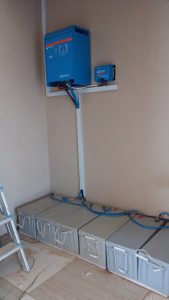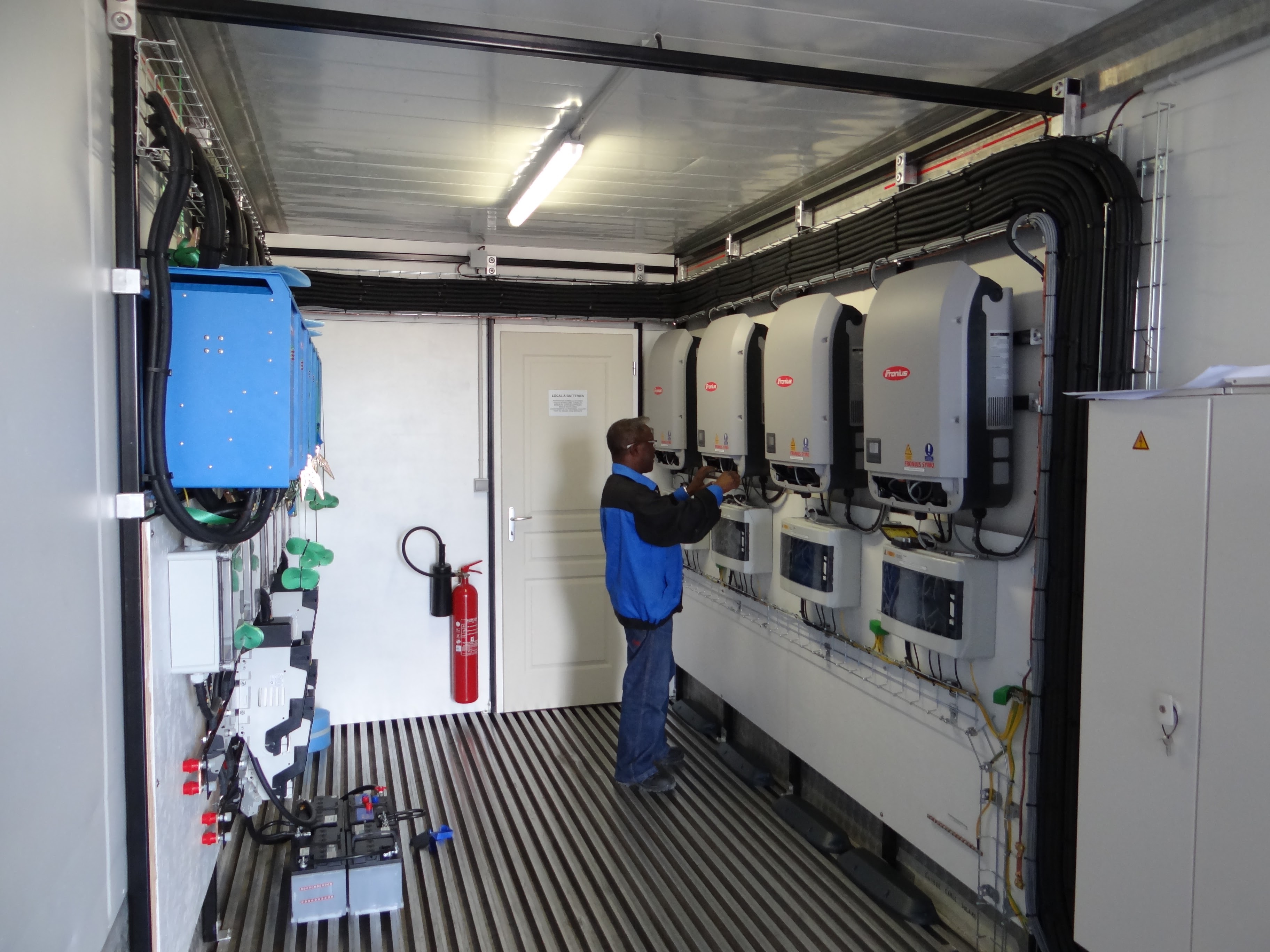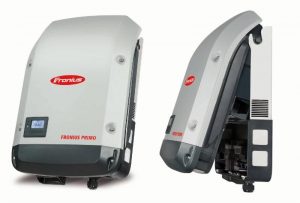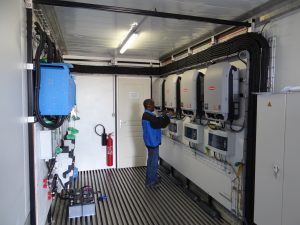Solar PV Power Paradigm Shift- The Ghana case.I am not that kind of a man, but I have been in the company of other men who in the midst of challenges rather saw them as opportunities to change the paradigm.
I strongly believe that very few energy planners and experts would disagree that Energy Independence for Ghana is an important, even urgent, goal.
But the question remains, is shifting the energy paradigm realistic; and if so, how?
And do our politicians and related institutions have the needed passion and spirit to embrace the new paradigm in our energy sector?
In recent years it has become so glaring that the conventional energy paradigm (fossil fuel tradition) has rapidly lost ground in comparison to the concept of Sustainable Development, as it is based on the intensive use of non-renewable fossil fuels — causing environmental degradation and posing Global Energy Security Risks.
Thus, a modification in our energy paradigm is necessary for our energy independence. A paradigm shift in the goals of energy policy should take place: toward independence, security of supply and climate change. Transition to a sustainable energy system is one of the critical challenges humankind faces in achieving energy independence in the new millennium.
Ghana is a country that has unbelievable solar energy potential; but, sadly, solar energy sources contribute only 0.1% (on-grid+ off-grid) of the total installed capacity for the total installed power capacity of 2104.5 MW in Ghana. (VRA: Facts & Figures).
Some people may say I am overly obsessed with the idea of solar energy for our small but incredibly energy-resource-rich nation.
It’s true – I am! But is it practical for Ghana to actually pursue this objective?
Talking of our potential, Wa — capital of the Upper West Region — has the highest level of solar irradiation (5.524 KWh/m2-day) across the country.
May is the month with the highest solar irradiation (5.897 KWh/m2-day), with August recording the lowest measurement (4.937kWh/m2-day) in Wa.
Akim Oda, conversely, is the location that records the lowest radiation (4.567kWh/m2-day) measurements across the country.
The highest measurement in Akim Oda was recorded in the month of April (5.176kWh/m2-day) and the lowest in August (3.802kWh/m2-day). See Table 1.
As a nation we are blessed with daily sunshine that averages 5 hours, which ranges between about 7 hours and 4 hours for the northern and southern regions of the nation respectively. Ghana also has annual average daily solar radiation of about 4.5 to 5 KWm2/day.
Table 1: Summary of Solar irradiation in kWh/m2-day – SWERA Report
| Synoptic Station |
Ground
(kWh/m2-day) |
Satellite
(kWh/m2-day) |
% Error |
| Kumasi |
4.633 |
5.155 |
-11.3 |
| Accra |
5.060 |
5.180 |
-2.3 |
| Navrongo |
5.505 |
5.765 |
-4.7 |
| Abetifi |
5.150 |
5.192 |
-0.8 |
| Akuse |
4.814 |
5.58 |
-15.9 |
| Wa |
5.520 |
5.729 |
-3.7 |
| Akim Oda |
4.567 |
5.177 |
-13.3 |
| Wenchi |
5.020 |
5.093 |
-1.5 |
| Ho |
5.122 |
5.223 |
-2.0 |
| Kete Krachi |
5.280 |
5.345 |
-1.3 |
| Takoradi |
5.011 |
5.200 |
-3.8 |
| Yendi |
5.370 |
5.632 |
-4.8 |
| Bole |
5.323 |
5.570 |
-4.6 |

Anti-islanding made easy: the anti-islanding box
The anti-islanding box is a complete pre-wired and easy to install requured by law in certain countries for net meteringinstallations
Assuming we are to use only 23,854km² which is 10% of the total land area (238,585 km²) of Ghana to harness the sun’s energy with PV panels of 15% conversion efficiency, then Ghana would harvest 4,114 TerraWattHours of energy per year.
This amount is equal to 2.42billion barrels of oil.
Consequently, if we juxtapose this amount with our current oil production in the Jubilee Field, then it is about 27 times the current crude oil production of Ghana per year.” See Chart A on Ghana PV Output.
In Ghana, Solar PV applications are gradually receiving acceptance in most places. However, despite improvements in local Research and Development (R&D) efforts, the body of knowledge on these technologies and their market potentials is considerably inadequate.
Launching major national initiatives on these technologies — such as the President’s 200,000 solar rooftops for households — requires a robust knowledge base and capacity.
In all, PV technologies are showing increasing promise in terms of efficiency improvements and cost. The estimated lifetime of PV modules are 25 years, and this makes them exceptionally attractive for investors.

The victron 500va phoenix offgrid inverter is excellent for small offgrid solar installations.its connectible to both Apple and Android smartphones, tablets, macbooks and other devices (VE.Direct Bluetooth Smart dongle needed)
Today, except for the Solar PV Panels produced in Kpone-Tema by Strategic Power Solutions (SPS) — a subsidiary of Strategic Security Systems International Limited, almost 80% the PV modules on the Ghanaian market are imported.
Solar PV systems can be extensively used for a wide range of electrical energy requirements: including solar home systems, water pumping, refrigeration and telecommunications that will reduce the load curve of electricity demand.
It has been estimated that solar rural electrification is about 30% cheaper than the cost of grid extension to rural communities that are about 18 to 20km from the nearest grid station.
However, there are still economic and institutional obstacles that limit this ability to self-generate power. For instance, while it is practical to install solar panels on a home, it is more difficult to scale-up these systems for commercial and industrial-sized projects. Scale is a critical issue in energy generation, as with scale comes lower project costs and greater efficiency.
For privately distributed generation projects, both small and large, to make greater contributions toward our national energy independence, there needs to be continued evolution of the bold policies that first introduced grid-connection rights and net metering in our renewable energy act.
The government must as a matter of urgency assist all consumers anywhere in the country to benefit from the net-metering incentive for solar power consumers. Again, due to the high upfront cost, government must establish a renewable energy revolving credit fund whereby solar consumers can borrow money to finance solar systems without making large up-front payments and without paying high interest rates to banks or private financiers.
Also, the PURC must establish a coherent pricing tariff for distributors to buy power from private solar-farm developers. This could unlock an untapped source of clean, reliable, economical power for Ghana.
While not easy to accomplish, these advances are achievable – and, importantly, they don’t need to cost the tax payers any money. However, they depend on the political will and leadership of our energy-sector authorities.
This an original story by Maxmillian Kwarteng and has been featured on BFT online





 GRADE refers to the quality of solar cell used in the solar panel, and are categorized as A, B, C, or D. “Grade A” cells are the highest quality, in that they are tested to ensure there are no micro-cracks in the solar cell, and all the cells are of the same type. The quality diminishes for grade B, which may have micro cracks and not all cells are of the same type (they sometimes mix and match). Grades C and D are much worse quality with larger cracks and chips, and the cell mismatch is even worse since typical solar cell will be exposed to sunlight throughout its lifetime. Sunlight contains harmful ultraviolet (UV) light that deteriorates all materials, including solar cells. The tiny flaws in the material become worse after prolonged exposure to sunlight, and its power output reduces over time.As a grade A cell has the least flaws to start with, its deterioration will be the slowest.
GRADE refers to the quality of solar cell used in the solar panel, and are categorized as A, B, C, or D. “Grade A” cells are the highest quality, in that they are tested to ensure there are no micro-cracks in the solar cell, and all the cells are of the same type. The quality diminishes for grade B, which may have micro cracks and not all cells are of the same type (they sometimes mix and match). Grades C and D are much worse quality with larger cracks and chips, and the cell mismatch is even worse since typical solar cell will be exposed to sunlight throughout its lifetime. Sunlight contains harmful ultraviolet (UV) light that deteriorates all materials, including solar cells. The tiny flaws in the material become worse after prolonged exposure to sunlight, and its power output reduces over time.As a grade A cell has the least flaws to start with, its deterioration will be the slowest.




















